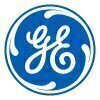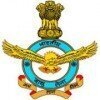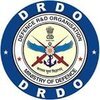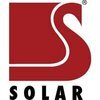Filter interviews by
Aequs Production & Quality Engineer Interview Questions, Process, and Tips
Aequs Production & Quality Engineer Interview Experiences
1 interview found
I applied via Referral and was interviewed in Sep 2023. There was 1 interview round.
(5 Questions)
- Q1. How to check parallity ? & perpendicularity ?
- Ans.
Parallity and perpendicularity can be checked using precision measuring tools and techniques.
Use precision measuring tools such as calipers, micrometers, or height gauges to measure the dimensions of the object.
For checking parallelity, measure the distance between two parallel surfaces at multiple points and ensure they are consistent.
For checking perpendicularity, measure the angle between two surfaces that should be...
- Q2. How to use leaver gauge ?
- Ans.
A lever gauge is used to measure the thickness of objects by applying pressure with a lever arm.
Place the object to be measured between the anvils of the lever gauge.
Use the lever arm to apply pressure on the object until it is firmly held between the anvils.
Read the measurement displayed on the gauge to determine the thickness of the object.
Ensure the gauge is calibrated properly for accurate measurements.
- Q3. Difference between Cylindercity and Circularity?
- Ans.
Cylindricity refers to how closely a cylinder's surface conforms to a perfect cylinder, while circularity refers to how closely a circle's boundary conforms to a perfect circle.
Cylindricity is a 3D form tolerance that controls the overall form of a cylinder, including straightness, roundness, and taper.
Circularity is a 2D form tolerance that controls the roundness of a circle, ensuring that all points on the circle are...
- Q4. Explain 8D problem-solving method
- Ans.
8D problem-solving method is a structured approach to identify, correct, and prevent recurring problems.
1. Define the problem: Clearly state the issue and its impact.
2. Establish a team: Form a cross-functional team to work on the problem.
3. Develop an interim containment action: Implement a temporary solution to prevent further issues.
4. Identify the root cause: Use tools like 5 Whys to determine the underlying cause.
...
- Q5. What's RPN in spc ?
- Ans.
RPN in SPC stands for Risk Priority Number, a calculation used in Six Sigma to prioritize potential failure modes based on severity, occurrence, and detection.
RPN is calculated by multiplying the severity, occurrence, and detection ratings of a potential failure mode.
It helps in identifying high-risk failure modes that need immediate attention in order to improve quality.
For example, if a failure mode has a severity ra...
Interview Preparation Tips
Skills evaluated in this interview
Top trending discussions






Interview questions from similar companies

Engineer Interview Questions & Answers
Honeywell Technology Solutionsposted on 30 Jun 2015
Interview Preparation Tips
Experience: To appear for test CG cut off -7.0. English and Basic aptitude/logical reasoning questions were asked. Basic coding questions and identifying errors in the program were there.
Round: Technical Interview
Experience: It was a 30-40 minutes round where questions were asked resume-based. Aerospace students were asked basic aero questions based on Navier Stokes equation,etc. There were no coding questions.
Round: HR Interview
Experience: It was a 15 minutes round where only some standard questions were asked.
Skill Tips: Courses in control systems might help but are not compulsory.Just describe one or two projects from your courses & BTP, which should be enough.Ensure that you know about the company well. BTP was very useful in my interview for Honeywell, it is not in their area of interest but he was just impressed by the project details. If you are applying for a core interview BTPs will definitely help.
Skills: Basic coding knowledge, Good aptitude, Willing to learn new things.
College Name: IIT MADRAS

I applied via Campus Placement
Interview Preparation Tips
Experience: Good
Tips: Very good resume
General Tips: Prepare well
Skills: Technical Skills, Scholastic Skills
Duration: 2
College Name: IIT Madras
Motivation: GE
Funny Moments: Good canteen

Engineer Interview Questions & Answers
Honeywell Technology Solutionsposted on 15 Apr 2022
I applied via Walk-in and was interviewed before Apr 2021. There was 1 interview round.
(1 Question)
- Q1. Tell me about yourself.
Interview Preparation Tips

I applied via Recruitment Consulltant and was interviewed in Jun 2023. There were 5 interview rounds.

(1 Question)
- Q1. Basics of SoM, aircraft structures
(1 Question)
- Q1. In depth of structural mechanics
(1 Question)
- Q1. Strength & weakness
(1 Question)
- Q1. Approach and attitude towards work
Interview Preparation Tips

Quality Engineer Interview Questions & Answers
Tata Advanced Systemsposted on 22 Jan 2023
I applied via Walk-in and was interviewed in Jul 2022. There were 2 interview rounds.

(4 Questions)
- Q1. What is your Daily work monitoring?
- Ans.
I monitor my daily work by keeping track of tasks, deadlines, and progress.
I use a task management tool to keep track of my to-do list and deadlines.
I regularly check in with my team to ensure we are on track and address any issues.
I review progress reports and metrics to measure the success of our quality initiatives.
I prioritize tasks based on their importance and urgency to ensure timely completion.
I document any is...
- Q2. Geometric dimensions and tolerancing
- Q3. Manufacturing process brief
- Q4. Problem solving tools
Interview Preparation Tips

Quality Engineer Interview Questions & Answers
Tata Advanced Systemsposted on 19 Aug 2024
(2 Questions)
- Q1. What is your contribution in APQP?
- Ans.
My contribution in APQP includes leading cross-functional teams, developing control plans, conducting FMEAs, and ensuring compliance with quality standards.
Leading cross-functional teams to develop and implement APQP processes
Developing control plans to monitor and control quality throughout the product lifecycle
Conducting Failure Mode and Effects Analysis (FMEA) to identify and mitigate potential risks
Ensuring complia...
- Q2. What are all the CI activities you submitted in this financial year?
- Ans.
Implemented various Continuous Improvement activities including process optimization and defect reduction.
Implemented Lean Six Sigma projects to reduce defects in production processes
Conducted root cause analysis to identify areas for improvement
Introduced new quality control measures to enhance product quality
Collaborated with cross-functional teams to streamline workflows and reduce waste

I applied via Company Website and was interviewed before Nov 2021. There were 2 interview rounds.
Multiple Choice Question consists of respective engineering dicipline and aptitude
(2 Questions)
- Q1. What is fluid dynamics
- Ans.
Fluid dynamics is the study of how fluids behave and interact with their environment.
It involves the study of fluid motion, pressure, and forces.
Applications include aerodynamics, hydrodynamics, and weather forecasting.
Important equations include the Navier-Stokes equations and Bernoulli's principle.
Fluid dynamics plays a crucial role in many engineering fields, such as aerospace and civil engineering.
- Q2. What is enthalpy and entropy
- Ans.
Enthalpy is the heat content of a system while entropy is the measure of disorder or randomness in a system.
Enthalpy is the sum of internal energy and the product of pressure and volume.
Entropy is a measure of the number of possible arrangements of a system.
Enthalpy is used in thermodynamics to describe heat transfer in chemical reactions.
Entropy is used to predict the direction of chemical reactions and the efficiency
Interview Preparation Tips

(3 Questions)
- Q1. What is a lean
- Q2. What is 7qc tool
- Q3. What is quality
Interview Preparation Tips

Quality Engineer Interview Questions & Answers
Tata Advanced Systemsposted on 4 May 2024
I applied via Newspaper Ad and was interviewed before May 2023. There were 2 interview rounds.
(1 Question)
- Q1. About self introduction for fluent of the English, Major questions are involved from our resume.
(1 Question)
- Q1. Major questions are involved from our resume.
Aequs Interview FAQs
Tell us how to improve this page.
Aequs Interviews By Designations
- Aequs Quality Engineer Interview Questions
- Aequs Lead Finance Executive Interview Questions
- Aequs Engineer Interview Questions
- Aequs Store Executive Interview Questions
- Aequs Production Manager Interview Questions
- Aequs Lead Engineer Interview Questions
- Aequs Production Engineer Interview Questions
- Aequs Junior Engineer Interview Questions
- Show more
Interview Questions for Popular Designations
- Production Engineer Interview Questions
- Production Supervisor Interview Questions
- Production Manager Interview Questions
- Production Officer Interview Questions
- Executive Production Interview Questions
- Production Interview Questions
- Senior Production Engineer Interview Questions
- Production Chemist Interview Questions
- Show more
Aequs Production & Quality Engineer Interview Process
based on 1 interview
Interview experience
Interview Questions from Similar Companies
|
Engineer
210
salaries
| ₹2 L/yr - ₹6.5 L/yr |
|
Lead Engineer
167
salaries
| ₹3.8 L/yr - ₹10 L/yr |
|
Junior Engineer
144
salaries
| ₹2 L/yr - ₹5.1 L/yr |
|
Quality Engineer
110
salaries
| ₹2.2 L/yr - ₹5.5 L/yr |
|
Deputy Manager
88
salaries
| ₹5.4 L/yr - ₹15 L/yr |

Indian Army

Indian Air Force

Tata Advanced Systems

Hindustan Aeronautics
- Home >
- Interviews >
- Aequs Interview Questions >
- Aequs Production & Quality Engineer Interview Questions










